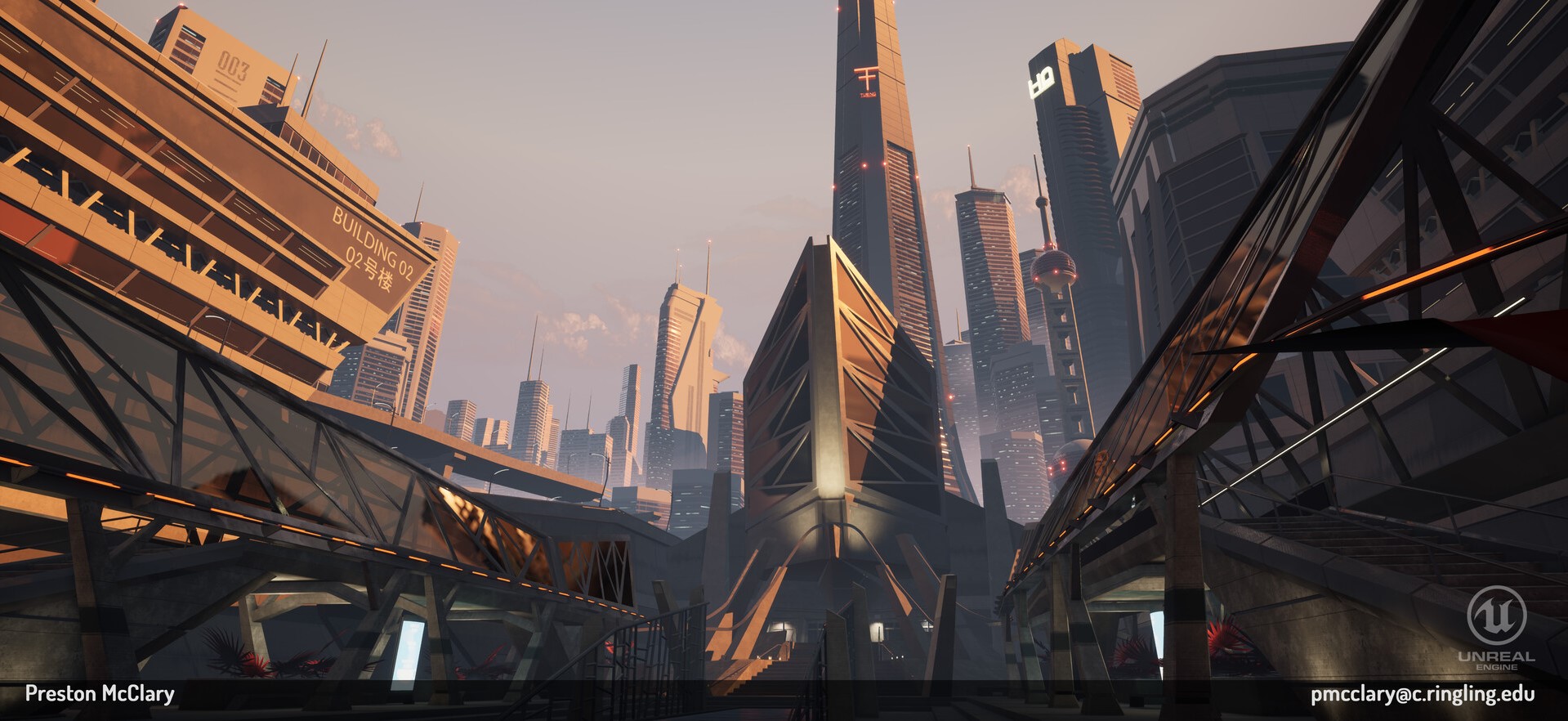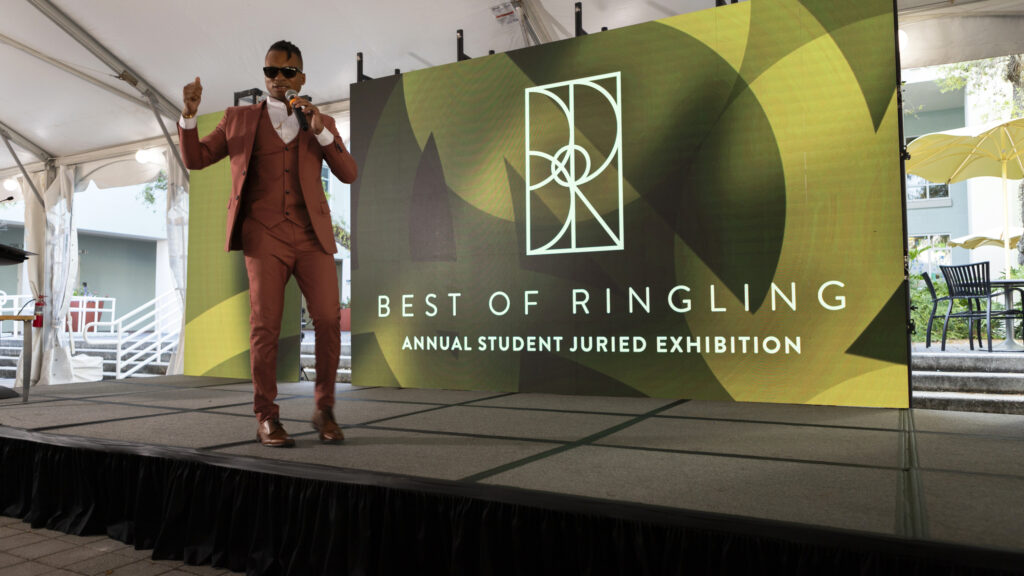Who am I? A human – AI hybrid named TAIS
Where am I? Shanghai
When am I? 2072
What do I do? I am rebelling because my human rights have been taken from me.
The question? Can I regain my humanity?
It is all part of the video game White Noise, created by recent Ringling College of Art + Design graduates Preston McClary and Harry Gray, finalists at the 2019 E3 College Game Competition, part of the annual Electronic Entertainment Expo (E3) in Los Angeles, the world’s largest video-game conference.
One thing we do know: Ringling College of Art + Design has a seat at the table, as one of the five finalists selected from more than 500 colleges and universities nationwide. The winner will be announced this week at the expo, which annually brings out more than 60,000 people to the Los Angeles Convention Center.
This will mark the second time that Ringling College of Art + Design has made it to the finals. The first time was in 2017, when Trent Sivek took home the top prize with his game, Phonetica.
According to Marty Murphy, coordinator for the Game Art and Virtual Reality departments, Preston and Harry created a prototype of White Noise in one of their junior game design classes, taught by Scott Carroll. The game then became their senior thesis project.
White Noise begins with a question, “Can machines think?” and then takes you on a fast-paced, twisting, turning, and tasing interactive adventure that will have you holding your breath until the very end. You slide over rails (the video equivalent of a skateboarder grinding on a rail), and traverse futuristic environments including a high-tech trash compactor; high-speed tunnels, walls to be scaled, a massive junk yard, and finally Shanghai itself, where our hero faces a killer robot. Game Art professor Scott Carroll called White Noise “a seven-course meal – the full video game experience.”
“I can’t think of two better representatives of our Game Art department than Harry and Preston,” Murphy added. Both students just graduated and soon will begin working at Microsoft, though at different game studios. “Microsoft has quickly become one of our largest employers and has hired some of our very best students.” Preston will work as an environmental artist, and Harry as a technical artist. Before they start their new jobs, however, the recent graduates will be joining Murphy in making the trip to Los Angeles.
There, they will compete against what Murphy calls “some of the stiffest competition we have ever faced,” being the students from Drexel University, Rensselaer Polytechnic, Columbia College Chicago and UC Santa Cruz. “Some of these teams have up to 40 people working on a single project,” Murphy said, “This year we have two: Harry and Preston.”
Does Ringling College have any edge at the E3? “Our graphics, our visual sophistication, always set our work apart from the competition,” Murphy said. “Other schools teaching game development today tend to approach it from the engineering side of the equation. Their work is definitely impressive. But we are different in that we bring together both the technical and artistic elements that go into each game”.
Game Art students at Ringling learn to create texturally rich, visually sophisticated gaming environments that tell stories, educate, inform, and yes, are fun to play.
The Ringling College Game Art department, which started as a minor in Computer Animation in 2007, welcomed its inaugural class in 2011. The department’s real-time, high-resolution graphics (3D work that can be updated at 60 frames per second) are created using the Unreal game engine. The result is an interactive experience where you, the user, are directing much of what happens. These video games, Murphy said, are not passive entertainment. Users are actively engaged from moment to moment with what’s happening on the screen.
All of the Game Art seniors had the opportunity to submit projects for competition. For E3, the faculty as a whole decided that Preston’s and Harry’s game would be submitted. “We are very proud of them, for the overall quality of their work and for creating a game that people will really enjoy playing,” Murphy said.
Today, video games are big business. In fact, 2018 was a record-breaking year with total video game sales exceeding $43 billion and more than 166 million adults in the United States playing video games. And no, most of these games are not child’s play, as the average age for video gamers is 33 years old.
So, does our hero TAIS, ever find its soul? Does it regain its humanity?
For the answer to that, you will have to play White Noise – and see for yourself.
Gayle Guynup / Content Connection




